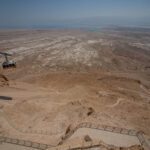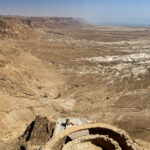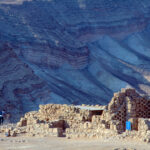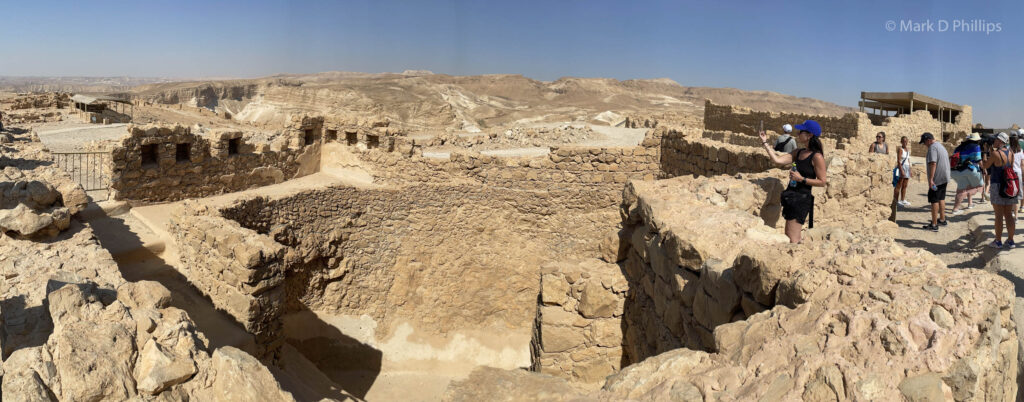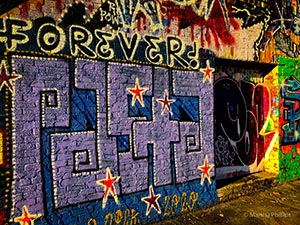It is one of Israel’s most visited tourist sites. And now a controversial one.
After 30 years, I made a return visit to the mountaintop fortress, which UNESCO added to its list of world heritage sites in 2001, citing its “majestic beauty” and its importance as a “symbol of the ancient kingdom of Israel, its violent destruction and the last stand of Jewish patriots in the face of the Roman army.”
During the Jewish Revolt against Rome from 66 to 70 CE, Masada became the stronghold of the rebels. Nearly four years after the fall of Jerusalem, a Roman army besieged the last holdouts. As the story goes, the Jewish rebels committed mass suicide rather than enslavement as the Roman troops breached the top.
From my first visit in 1992 till now, the history of Masada as a bastion of defiance has been based on a sole historical source of the battle written years later by Roman historian Josephus Flavius, who probably wasn’t there. Archaeologists at the site are finding (and NOT finding) historical relics that challenge the story.
“We’re actually excavating a refugee camp,” said Professor Guy Stiebel of Tel Aviv University, who led excavations in 2017 that were the first at the site in over a decade. The new digs have shown the sheer size of King Herod’s irrigated gardens, his vine-growing and possible wine production, and uncovering how the rebels grew crops atop the craggy site.
One important question remains: why did the Romans besiege Masada at all? It was a lot of expense and work to maintain a Roman Legion in the desert pulling basically guard duty.
Stiebel has a different theory from the conventional. Ein Gedi and Jericho were the only two ancient oases that commercially produced the balsam plant, exported throughout the known world to treat ailments from cataracts to coughs to snakebites. One of the tour guides that led me through this 2022 visit to Masada, talked of the “rebels atop Masada” raiding Ein Gedi for food and supplies, attacking other Jews. During the raid, 700 were killed at Ein Gedi, and the continued threat posed by Masada to the balsam trade is more than enough to explain Rome’s actions. Trade warfare always makes more sense than being pissed off at a group of free men atop a mountain. Josephus said nearly 1,000 rebels were found dead when Roman troops broke through the walls, but the remains of just 28 people turned up in excavations.
During the seven years of revolt from Rome, the holdouts atop the citadel were “a sort of microcosm of Judea back then,” according to Stiebel. There were refugees from Jerusalem, priests, members of the enigmatic monastic group from Qumran that wrote the Dead Sea Scrolls, and at least one Samaritan. There seem to still be more questions than answers. Were they noble rebels fighting against the Roman conquest? Or were they the equivalent of mountain men wanting to stay away from society?
“What my expedition intends to do is to reconstruct life at Masada, without even referring to the death and what happened at the end,” Stiebel said.
Utilizing a team of archaeobotanists and archaeozoologists, they learned about the refugees’ diet and studied pollen samples to learn what crops they raised. This new study led Stiebel to the conclusion that the Jewish rebels subsisted on food they cultivated atop the mountain, and raised cattle and goats.
“We have the opportunity to truly see the people, and this is very rare for an archaeologist,” he said. Among them are women and children, who are too often underrepresented in the archaeological record.
“We know people by name, we know people by profession. We can learn about the way this group of rebels lived,” he said.
What amazed me the most was what King Herod accomplished atop Masada. This was his mountaintop home away from home nearly a century before Masada’s last stand. Herod, the first-century BCE king of Judea, constructed a fortress and palace on the mountain that featured elegant frescoes, tiled mosaics, and an elaborate waterworks channeling seasonal rainfall into cisterns giving a larger water supply than Jerusalem.
“A lifetime would not suffice to get a glimpse of all the hidden beauties of Masada,” he said.
REFERENCES:
Archaeologists get set to dig at Masada, after 11-year hiatus; Times of Israel; 5 February 2017
Israeli archaeologist announces return to Masada after ten-year absence; i24 News; November 05, 2016
New Archaeology Shows ‘Refugee Camp,’ Not Just Rebels, Atop Masada; FORWARD.com; September 10, 2017
Masada: From Jewish Revolt to Modern Myth; Jodi Magness, Princeton Press; May 2019



